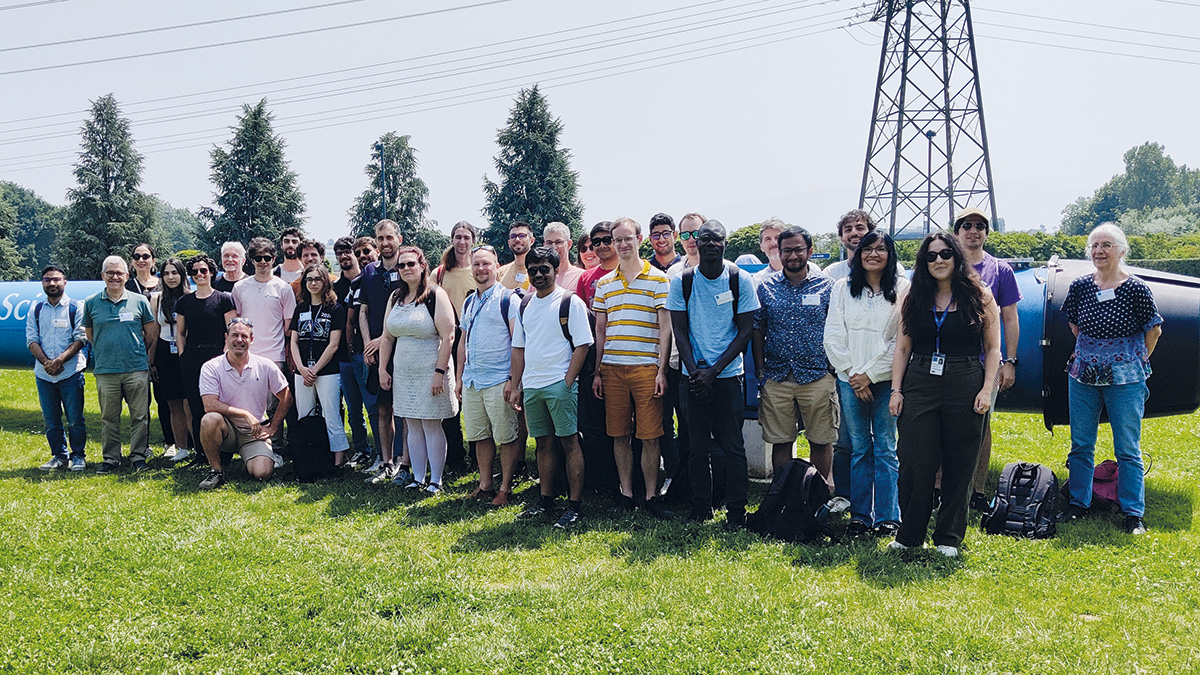Neutron stars are truly remarkable systems. They pack between one and two times the mass of the Sun into a radius of about 10 kilometres. Teetering on the edge of gravitational collapse into a black hole, they exhibit some of the strongest gravitational forces in the universe. They feature extreme densities in excess of atomic nuclei. And due to their high densities they produce weakly interacting particles such as neutrinos. Fifty experts on nuclear physics, particle physics and astrophysics met at CERN from 9 to 13 June to discuss how to use these extreme environments as precise laboratories for fundamental physics.
Perhaps the most intriguing open question surrounding neutron stars is what is actually inside them. Clearly they are primarily composed of neutrons, but many theories suggest that other forms of matter should appear in the highest density regions near the centre of the star, including free quarks, hyperons and kaon or pion condensates. Diverse data can constrain these hypotheses, including astronomical inferences of the masses and radii of neutron stars, observations of the mergers of neutron stars by LIGO, and baryon production patterns and correlations in heavy-ion collisions at the LHC. Theoretical consistency is critical here. Several talks highlighted the importance of low-energy nuclear data to understand the behaviour of nuclear matter at low densities, though also emphasising that at very high densities and energies any description should fall within the realm of QCD – a theory that beautifully describes the dynamics of quarks and gluons at the LHC.
Another key question for neutron stars is how fast they cool. This depends critically on their composition. Quarks, hyperons, nuclear resonances, pions or muons would each lead to different channels to cool the neutron star. Measurements of the temperatures and ages of neutron stars might thereby be used to learn about their composition.
Research into neutron stars has progressed so rapidly in recent years that it allows key tests of fundamental physics
The workshop revealed that research into neutron stars has progressed so rapidly in recent years that it allows key tests of fundamental physics including tests of particles beyond the Standard Model, including the axion: a very light and weakly coupled dark-matter candidate that was initially postulated to explain the “strong CP problem” of why strong interactions are identical for particles and antiparticles. The workshop allowed particle theorists to appreciate the various possible uncertainties in their theoretical predictions and propagate them into new channels that may allow sharper tests of axions and other weakly interacting particles. An intriguing question that the workshop left open is whether the canonical QCD axion could condense inside neutron stars.
While many uncertainties remain, the workshop revealed that the field is open and exciting, and that upcoming observations of neutron stars, including neutron-star mergers or the next galactic supernova, hold unique opportunities to understand fundamental questions from the nature of dark matter to the strong CP problem.
